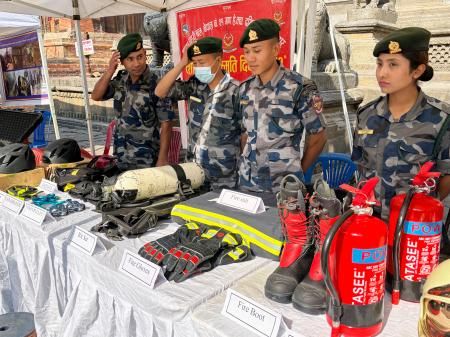Nepal Earthquake: Disaster Preparedness Lessons Learned and Applied
The devastating 2015 Nepal earthquake, measuring 7.8 on the Richter scale, served as a brutal wake-up call, highlighting the critical need for robust disaster preparedness strategies globally. The earthquake's impact, resulting in thousands of casualties and widespread infrastructure damage, underscored the crucial lessons that can – and must – be learned and applied to mitigate future disasters. This article explores those key lessons, focusing on practical steps for improved preparedness.
Key Lessons from the Nepal Earthquake
The Nepal earthquake revealed significant shortcomings in disaster preparedness, but also highlighted areas of effective response and recovery. Analyzing these aspects provides valuable insights for communities worldwide.
1. Building Codes and Infrastructure: A Critical Weakness
The earthquake exposed the vulnerability of Nepal's infrastructure, particularly its housing stock. Many buildings, lacking earthquake-resistant design and construction, collapsed, leading to significant loss of life. This highlights the paramount importance of:
- Enforcing stringent building codes: Implementation and strict enforcement of updated building codes designed to withstand seismic activity are crucial. This includes regular inspections and penalties for non-compliance.
- Investing in resilient infrastructure: Building robust infrastructure, including roads, hospitals, and communication networks, is vital for effective disaster response and recovery. This requires long-term investment and strategic planning.
- Retrofitting existing structures: Retrofitting older buildings to meet modern seismic standards is a crucial step in mitigating future damage. Government incentives and technical assistance can help facilitate this process.
2. Early Warning Systems and Public Awareness: A Vital Need
While early warning systems can't prevent earthquakes, they can significantly reduce casualties by allowing for timely evacuation. The Nepal earthquake demonstrated the need for:
- Improved early warning systems: Investing in advanced seismic monitoring networks and developing effective communication channels to disseminate warnings quickly is critical.
- Public awareness campaigns: Educating the public about earthquake preparedness, including evacuation procedures and safety measures, is vital. Regular drills and simulations can enhance preparedness.
- Community-based preparedness: Empowering local communities with the knowledge and resources to respond effectively is crucial. This includes training community members in first aid, search and rescue, and emergency communication.
3. Post-Disaster Response and Recovery: Challenges and Opportunities
The aftermath of the earthquake showcased the challenges of large-scale disaster response and recovery. Effective response requires:
- Efficient coordination among agencies: Clear communication and coordination between government agencies, NGOs, and international organizations are essential for an effective response.
- Rapid provision of essential services: Ensuring access to clean water, food, shelter, and medical care is paramount in the immediate aftermath of a disaster.
- Long-term recovery planning: Recovery involves not only rebuilding infrastructure but also addressing the psychological and economic impacts on affected communities. This requires long-term planning and sustainable development strategies.
Applying the Lessons: Building a More Resilient Future
The Nepal earthquake serves as a stark reminder of the devastating consequences of inadequate disaster preparedness. By learning from this experience, we can build more resilient communities and mitigate the impact of future earthquakes and other natural disasters. This involves a multi-faceted approach encompassing robust building codes, effective early warning systems, public awareness campaigns, and well-coordinated post-disaster response and recovery mechanisms. Investing in preparedness is not just about saving lives; it's about building a safer and more sustainable future.
Further Reading:
Call to Action: Learn more about earthquake preparedness in your community and take steps to protect yourself and your family. Advocate for improved building codes and disaster preparedness initiatives in your region.
